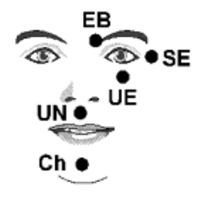
If you’re struggling with debilitating phobias, the Emotional Freedom Technique (EFT) offers removing phobias fast, evidence-based solution by tapping into specific meridian points to alter the brain’s fear responses. This method disrupts the established neurological patterns linked to the phobia, helping you manage and often alleviate symptoms like rapid heartbeat and excessive sweating.
Clinical research supports EFT‘s capacity to markedly reduce anxiety and promote emotional well-being by reprogramming negative emotional conditioning. Skilled in combining tapping with personalized affirmations, EFT facilitates a shift from fear to empowerment, enhancing your quality of life substantially. Learning more about how it specifically works might provide insights into lasting relief.
Key Takeaways
- EFT targets meridian points to disrupt fear-related neurological patterns, offering rapid relief from phobia symptoms.
- Personalized affirmations during EFT sessions reprogram negative beliefs and foster positive emotional responses.
- Combining EFT with cognitive behavioral therapy can accelerate the overcoming of phobias through cognitive restructuring.
- Clinical studies validate EFT’s effectiveness in significantly reducing anxiety and phobia-related symptoms quickly.
- Regular EFT practice can rewire emotional responses, ensuring long-term phobia management and emotional well-being.
Understanding Phobias
Phobias aren’t just extreme fears; they’re complex emotional responses that your brain has learned to associate with specific situations or objects.
Common types of phobias include claustrophobia, the fear of confined spaces, and arachnophobia, the fear of spiders, which can trigger overwhelming anxiety and physical symptoms like a racing heart or dizziness.
Understanding the nature of phobias is important as it lays the groundwork for addressing them effectively through techniques such as the Emotional Freedom Technique.
Nature of Phobias
To effectively address your phobias with techniques like Emotional Freedom Technique (EFT), it’s essential to understand their origins, whether they stem from past experiences, learned behaviors, or genetic factors.
Common types of phobias, such as arachnophobia or acrophobia, illustrate the wide range of stimuli that can trigger intense fear responses.
Analyzing the impact of these phobias on your daily life and mental well-being can guide the customization of your EFT sessions for more targeted and effective relief.
Understanding Phobia Origins
Understanding the origins of your phobia involves delving into past experiences or learned behaviors that now trigger intense, irrational fears. Here’s what you might envision:
- A childhood encounter with a trapped, menacing spider.
- Hearing a relative’s exaggerated stories of flying.
- A painful medical procedure without proper emotional support.
- Witnessing a traumatic event that left deep emotional scars.
These experiences can disrupt your energy meridians, creating lasting emotional blockages. EFT techniques target these blockages, offering relief.
Common Phobia Types
You might find yourself feeling irrationally fearful of specific objects, situations, or social settings, which are common manifestations of phobias.
Specific phobias, like fear of flying, or social phobias involving dread of scrutiny, and agoraphobia, a fear of inescapable situations, can cause significant emotional distress.
Understanding these types can be crucial in addressing the deep-seated anxieties that disrupt daily life.
Phobia Impact Analysis
Phobias, characterized by intense and irrational fears, often lead to debilitating physical symptoms such as a rapid heartbeat, shortness of breath, and excessive sweating. Understanding their nature involves:
- Recognizing the irrational fears triggering these responses.
- Identifying underlying emotional blockages.
- Using Emotional Freedom Technique (EFT) to address these fears.
- Tapping specific acupressure points to release emotional tensions swiftly.
Common Phobia Types
You might be wondering about the different categories of phobias and which are the most common. Specific phobias, like fear of spiders or heights, focus on particular objects and situations, while social phobias center around fears of interaction or scrutiny.
Identifying Phobia Categories
Understanding the various categories of phobias is essential as each type requires a tailored approach when using Emotional Freedom Technique (EFT) for treatment.
- Specific Phobias: Triggered by objects like spiders or heights, often rooted in past traumatic experiences.
- Social Phobias: Fear of social situations, impacting interactions.
- Agoraphobia: Dread of open or crowded spaces.
- Blood-Injection-Injury Phobias: Anxiety from medical procedures or injuries.
Exploring Most Common Phobias
Having explored the categories of phobias, let’s now examine some of the most common types that people often experience. These include arachnophobia, acrophobia, and claustrophobia. Specific phobias like aerophobia and agoraphobia are also prevalent.
Emotional Freedom Technique effectively targets these fears, offering rapid relief by addressing the emotional triggers tied to each phobia, such as social phobia, emetophobia, and zoophobia.
Basics of Emotional Freedom Techniques

To effectively employ Emotional Freedom Techniques (EFT) for phobia relief, you’ll need to grasp its core principles, understand the specific locations of tapping points, and learn how to craft effective affirmations.
Each tapping point corresponds to a meridian that, when stimulated, can help release emotional blockages, enhancing your psychological resilience.
Mastering the skill of affirmation crafting will further enable you to reframe and neutralize the negative emotions tied to your phobias.
EFT Core Principles
At the heart of Emotional Freedom Technique (EFT), a blend of psychology and acupressure plays a vital role in addressing and alleviating deep-seated fears and negative emotions. By integrating these disciplines, EFT targets your emotional distress directly, offering a path to recovery that’s both quick and lasting. Here’s how it works:
- Acknowledgment of Emotional Distress: You start by openly acknowledging your specific fears or anxieties. This recognition is essential as it prepares your mind and body for the healing process.
- Tapping on Acupressure Points: You’ll tap on designated acupressure points. This tapping helps to release energy blockages that contribute to emotional distress, facilitating a smoother flow of energy throughout your body.
- Rewiring Neural Pathways: The repetitive action of tapping while focusing on emotional triggers helps to rewire neural pathways, reducing the automatic fear response your brain generates.
- Reassessment and Calming: After tapping, you reassess your emotional state, often finding a significant reduction in anxiety levels. This process promotes calmness and aids in emotional regulation.
Tapping Point Locations
Understanding the locations of tapping points is essential for effectively applying the Emotional Freedom Technique (EFT) to combat your phobias. Each point you’ll tap aligns with specific energy meridians in your body, which are vital for addressing the emotional aspects of fear.
As you apply pressure to these points in a sequence, you’re not only working to alleviate symptoms but also targeting the root cause of your phobia, fostering both immediate and long-term relief.
Identifying Key Points
Begin your journey to overcoming phobias by familiarizing yourself with the key tapping points used in Emotional Freedom Techniques (EFT).
- Top of the Head: Targets the crown’s energy center.
- Eyebrow: Relieves stress and anxiety near the brow’s start.
- Under the Eye: Alleviates fear emotions along the cheekbone.
- Collarbone: Helps balance overall energy, easing body tension.
Sequence for Effective Tapping
One can effectively manage their phobias by mastering the Emotional Freedom Technique (EFT) tapping sequence, which involves precise stimulation of acupressure points known to alleviate emotional stress.
Tapping on key areas like the karate chop point and under the arm addresses emotional blockages, diminishes phobia triggers, and mitigates emotional distress.
Regular practice stabilizes energy flow, enhancing overall emotional resilience.
Affirmation Crafting Techniques
To effectively utilize Emotional Freedom Technique for phobia treatment, you’ll need to master the art of crafting affirmations. Start by identifying your core beliefs that fuel your phobia; this understanding forms the foundation of structuring affirmations that resonate deeply and foster emotional change.
Personalizing your affirmation practice enhances the tapping process, ensuring the affirmations are directly aligned with your specific fears and promoting more rapid healing.
Identifying Core Beliefs
Identifying and addressing your core beliefs is a fundamental step in crafting effective affirmations for Emotional Freedom Technique (EFT).
- Explore deep-rooted fears that fuel your phobia.
- Analyze how these beliefs impact your emotional responses.
- Recognize patterns that perpetuate your fear.
- Reconstruct these beliefs into empowering affirmations for emotional healing.
This approach guarantees your affirmations resonate deeply, enhancing their effectiveness in overcoming phobias.
Structuring Effective Affirmations
Crafting effective affirmations is a pivotal skill within the Emotional Freedom Technique (EFT) for combating phobias. You’ll use personalized, positive statements to reprogram your subconscious, instilling safety and empowerment. Repeating these affirmations while tapping reinforces positive beliefs and helps counteract negative thought patterns. This structured approach not only desensitizes you to phobic stimuli but also promotes your overall emotional well-being.
Personalizing Affirmation Practice
Your journey to mastering Emotional Freedom Technique (EFT) for phobia relief begins with personalizing your affirmations. Here are steps to craft them effectively:
- Identify Specific Phobia Triggers: Pinpoint what exactly sparks your fear.
- Craft Positive, Present Tense Statements: These should resonate emotionally.
- Rewire Negative Beliefs: Target these directly with your affirmations.
- Aim for a Powerful Psychological Shift: Envision overcoming your fears.
EFT Mechanisms and Effects

You might be wondering how exactly Emotional Freedom Technique (EFT) influences your brain to combat phobias. Tapping on specific meridian points, as per the fundamentals of EFT, not only disrupts your usual neurological patterns but also fosters new, healthier responses to fear.
This process, grounded in neurological impact analysis, is backed by research suggesting significant shifts in the brain’s fear centers, offering you a powerful tool for emotional regulation and phobia relief.
Tapping Point Fundamentals
Understanding the fundamentals of tapping points in Emotional Freedom Technique (EFT) is essential for effectively alleviating phobias. By tapping on designated acupressure points, you can target the emotional components that sustain your fear responses. Here’s how it works:
- Acupressure Points Activation: Tapping on specific points, such as those found on the face and body, stimulates energy pathways. This action helps restore balance and release emotional blockages.
- Emotional Release: As you tap, you’re encouraged to focus on your phobia. This focused attention helps in the release of negative emotions tied to your fears, making the process therapeutic.
- Fear Response Management: Regular tapping sessions reduce the intensity of fear responses. Over time, your brain learns to react differently to the phobic stimulus, diminishing the phobia’s power over you.
- Reassessment and Reinforcement: Each session ends with reassessing your emotional state and affirming positive thoughts. This reinforces the changes in your emotional responses to fears.
These steps in EFT tapping sessions not only decrease anxiety related to phobias but also improve overall emotional regulation, empowering you to tackle your fears head-on with renewed confidence and control.
Neurological Impact Analysis
Building on the basics of tapping points in Emotional Freedom Technique, it’s important to examine the neurological impacts this practice can have. EFT targets your fear responses by restoring energy balance, a process deeply intertwined with your neurological framework. By tapping on specific acupressure points, this therapy sends calming signals to your brain, altering its response to fear-triggering stimuli.
Research highlights how EFT facilitates emotional regulation by engaging parts of your nervous system responsible for calming and reassurance. When you tap, you’re essentially participating in a form of biofeedback, signaling your brain to shift from a stress-induced ‘fight or flight’ state to a more relaxed ‘rest and digest’ state. This change is vital for modifying the neural pathways associated with phobias.
Furthermore, tapping therapy promotes neural rewiring. Each session helps dismantle the old fear-based neural circuits, replacing them with new patterns of thought and reaction. This is important in reducing phobia-related anxiety and enhancing your overall emotional resilience.
The repeated process of acknowledgment, tapping, affirmation, and reassessment in EFT not only desensitizes you to past fears but also equips you with a healthier mechanism for handling future stressors.
Step-by-Step EFT Process

To effectively utilize the Emotional Freedom Technique (EFT) for phobia removal, you’ll first need to clearly identify the core of your phobia.
Next, apply the tapping technique to specific acupressure points while simultaneously affirming positive statements that directly address your fear.
This structured approach has been shown to markedly reduce phobic reactions by reprogramming emotional responses and enhancing emotional regulation.
Identify Core Phobia
Before delving into the Emotional Freedom Technique (EFT) to combat your phobia, pinpointing the specific fear that triggers your intense emotional responses becomes crucial. Identifying the core phobia is a pivotal first step in the EFT process, setting the stage for effective intervention and lasting relief.
Here are key actions to help identify your core phobia:
- Reflect on Past Experiences: Recollect when you first noticed your phobic reaction. What event or situation triggered it? Understanding the origins can clarify your current triggers.
- List Specific Situations: Jot down specific instances where you felt overwhelming fear. Notice patterns or common elements in these situations that elevate your distress levels.
- Rate Your Fear: On a scale of 1 to 10, evaluate the intensity of your fear during these situations. This helps gauge the severity of your phobia and monitor changes through the EFT process.
- Acknowledge Emotional Responses: Recognize the negative emotions linked with each instance of the phobia. This awareness is crucial for targeting these emotions effectively during the tapping sequence.
Apply Tapping Technique
Having identified your core phobia, you’re now ready to apply the Emotional Freedom Technique (EFT), a method proven to ease the psychological distress associated with phobias. Begin by following a structured sequence of tapping on key acupressure points. These points are typically located on the head, face, and upper body, including areas like the top of the head, the eyebrow, side of the eye, under the eye, under the nose, the chin, the collarbone, and under the arm.
As you tap each point, typically seven to ten times, maintain a focus on your phobia. This method helps in reducing the emotional intensity levels associated with your fear. It’s essential to observe and mentally note the changes in your feelings of fear throughout the process.
Monitoring these shifts in emotional intensity levels is key; they serve as indicators of the technique’s effectiveness at that moment. Consistent practice of this tapping technique can lead to rapid relief from phobias. The repetitive tapping combined with focused attention on the phobic stimulus disrupts the habitual response patterns in your brain, paving the way for emotional release and eventual desensitization to the fear triggers.
Affirm Positive Statements
During your EFT session, after you’ve completed the tapping process, it’s important to affirm positive statements to effectively counteract the negative emotions tied to your phobia. These affirmations help shift your focus from fear to empowerment, fostering a critical change in your mental landscape.
Positive statements rewire the neural pathways in your brain, which are essential for altering how you respond to fear. By consistently using these affirmations, you reinforce new, healthier patterns of thinking. Here are some examples to vividly imagine and integrate into your routine:
- Visualize Calmness: Picture yourself standing in a serene forest, sunlight filtering through the leaves. As you tap, affirm, “I am calm and at peace with my surroundings.”
- Embrace Confidence: Imagine yourself speaking confidently in front of a crowd. With each tap, repeat, “I am confident and in control.”
- Cultivate Safety: Envision a protective shield surrounding you. Affirm, “I am safe and secure at all times.”
- Foster Resilience: See yourself rising strong after a setback. Each affirmation, “I adapt and overcome with ease,” strengthens your emotional resilience.
Integrating EFT With Other Therapies

You can enhance your treatment of phobias by integrating Emotional Freedom Technique (EFT) with Cognitive Behavioral Therapy (CBT) and meditation.
Research indicates that when EFT is paired with CBT, it augments the cognitive restructuring process, leading to more robust treatment outcomes.
Similarly, combining EFT with meditation practices can help deepen the relaxation response, further reducing phobia-related anxiety.
EFT and Cognitive Behavioral
Integrating Emotional Freedom Technique (EFT) with cognitive-behavioral therapy (CBT) greatly enhances the treatment outcomes for phobias. By merging the physical EFT tapping with the mental strategies of CBT, you’re equipped to tackle your phobia on multiple fronts. Here’s how combining these therapies can vividly transform your approach to phobia management:
- Simultaneous Relief: Imagine tapping on meridian points, calming your body’s stress response, while systematically restructuring the negative thoughts that fuel your phobia. This dual-action reduces symptoms more rapidly than CBT alone.
- Deep Emotional Processing: EFT tapping accesses deeper emotional layers, addressing energy flow disruptions often overlooked by CBT. This integration allows you to release emotional blockages linked to your phobia, facilitating a deeper healing process.
- Cognitive Clarity: As you tap, the emotional fog begins to clear, enhancing your cognitive process during CBT. This clarity helps you better challenge and remodel the irrational beliefs that perpetuate your fear.
- Sustained Improvement: Studies suggest that the combination leads to improved emotional regulation and sustained symptom reduction, offering you a more resilient and long-term solution to phobia management.
Combining EFT with cognitive behavioral therapy not only addresses the emotional components of your phobia but also systematically dismantles the cognitive distortions associated with it, leading to a detailed and enduring recovery.
Combining EFT With Meditation
While combining Emotional Freedom Technique (EFT) with cognitive-behavioral therapy offers a robust approach to phobia management, incorporating meditation into your EFT practice can further enhance its effectiveness. By integrating meditation, you’re not just targeting the surface symptoms of your phobias, but also deepening your emotional regulation. This holistic approach can notably ameliorate your response to fears.
Meditation, when combined with EFT, promotes mindfulness, which is essential in observing and altering your emotional responses to phobic triggers. This practice helps maintain a calm and centered state of mind, enabling you to approach EFT with greater focus and receptivity.
The synergy of EFT and meditation not only reduces stress and anxiety levels but also supports a more profound healing process. You’ll find that meditation complements the tapping process by fostering a relaxed environment, conducive to the free flow of energy. This integration effectively addresses the deep-seated fears that often underlie phobias, providing a double-edged sword against your anxieties.
As you continue with this combined approach, expect to see a marked improvement in your overall emotional and mental well-being, empowering you to lead a life free from the constraints of phobias.
Research on EFT Effectiveness

You may find it compelling that clinical studies consistently demonstrate the effectiveness of the Emotional Freedom Technique (EFT) in reducing phobia-related symptoms. These studies often highlight not only the immediate relief EFT provides but also its long-lasting impact on emotional regulation and fear response.
In addition, research points to the relatively short treatment duration required with EFT, making it a practical option for rapid phobia management.
Clinical Study Outcomes
How effective is the Emotional Freedom Technique (EFT) in treating phobias? You’re probably seeking a method that not only promises results but is also backed by solid research. Clinical EFT studies have consistently demonstrated its efficacy in addressing not just phobias but also the emotional issues that often underpin these intense fears. Here’s what the research tells us:
- Reduction in Anxiety and Phobic Symptoms: Clinical studies highlight a significant decrease in anxiety levels for individuals suffering from various phobias. These findings underscore the success of EFT in desensitizing fear responses effectively.
- Improvement in Emotional Regulation: Post-EFT sessions, individuals report enhanced ability to manage their emotional responses, essential for long-term phobia management.
- Long-Term Benefits: Research outcomes point to lasting relief from phobia symptoms, suggesting that EFT helps rewire emotional responses to phobic stimuli over time.
- Promotion of Emotional Well-Being: Besides phobia relief, EFT contributes to overall emotional well-being, helping individuals feel more emotionally balanced and less controlled by their fears.
These points collectively affirm EFT’s role as a powerful therapeutic approach in the field of phobia treatment, offering both immediate and enduring benefits.
EFT Treatment Duration
Given that EFT can significantly reduce phobia symptoms in just one session, it’s vital to consider the duration and frequency of treatment for sustained effectiveness. You’ll find that while immediate relief is often reported, consistent sessions may be essential for achieving long-lasting benefits. Research indicates that the rapid alleviation of phobia symptoms through EFT is because of its ability to rewire neural pathways, effectively reducing anxiety levels associated with phobias.
The studies highlight that while some individuals experience significant relief after a single session, others might need several sessions spread over a few weeks to consolidate the changes. This variation largely depends on the individual’s emotional landscape and the intensity of the phobic response. It’s crucial to tailor the frequency and length of EFT sessions to your specific needs to make sure the rewiring of neural pathways is strong and durable.
Furthermore, follow-up sessions are recommended to reinforce the new emotional responses and maintain reduced anxiety levels. By committing to a structured EFT treatment plan, you’re more likely to transform your acute phobia into a manageable annoyance, thereby restoring a sense of control and emotional freedom in your life.
Challenges in EFT Practice

As you explore the challenges in EFT practice, it’s important to recognize that correctly identifying core fears is fundamental to targeting the right emotional triggers.
If you’re not using proper tapping techniques, the effectiveness of EFT can greatly diminish, compromising the potential for rapid phobia relief.
Additionally, sustaining emotional changes post-EFT requires consistent follow-up and possibly integrating other therapeutic modalities to guarantee long-term success.
Identifying Core Fears
Identifying main anxieties is a vital step in Emotional Freedom Technique (EFT) practice, as it allows practitioners to pinpoint the specific emotional triggers underlying a client’s phobia. As you, an EFT practitioner, initiate on this task, you’re engaging with some of the most challenging yet important aspects of therapeutic intervention.
Here are the key elements involved in identifying these main anxieties:
- Exploration and Discovery: You dig deep into the client’s past experiences and current emotional landscape to uncover hidden fears that fuel phobias.
- Client Dialogue: Engaging in open, empathetic conversations helps to reveal the emotional complexities that the client may not immediately recognize or articulate.
- Pattern Recognition: You analyze behavioral and emotional patterns to connect disparate experiences that contribute to the phobia.
- Emotional Honesty: Encouraging clients to confront and express their deepest fears is essential, even if it initially increases their discomfort.
Addressing these main anxieties involves not just skill and knowledge, but also a profound commitment to ethical practice and client care. The process requires patience and sensitivity, as you guide clients through the often-painful journey of facing and overcoming their deepest fears.
Proper Tapping Techniques
Mastering proper tapping techniques is crucial for effectively utilizing the Emotional Freedom Technique (EFT) to combat phobias. You must accurately tap on designated acupressure points to disrupt the body’s energy system associated with fear, ensuring the phobia’s hold is weakened. This precision in tapping is critical; however, challenges such as client resistance can arise.
Resistance often stems from skepticism or discomfort with the process, potentially hindering progress. To address these difficulties, it’s important that you, as a practitioner, maintain a high level of skill and professionalism. Inconsistencies in practitioner skills can lead to ineffective tapping sessions, which may not provide the relief your clients seek.
Moreover, a deep understanding of the tapping points and the sequence in which they should be addressed is essential. Misapplication can result in suboptimal outcomes, making the phobia persist longer than necessary. Overcoming these challenges requires thorough training and experience.
You’ll need to adapt techniques to individual client needs and sometimes integrate other therapeutic modalities to achieve the best results. Remember, ethical considerations and maintaining high standards of client care are paramount in your practice of EFT for removing phobias.
Sustaining Emotional Changes
While practitioners often effectively address initial phobic reactions using EFT, sustaining these emotional changes presents a more intricate challenge. Sustained success in EFT requires a structured approach that goes beyond the initial tapping sessions. Here’s what you need to keep in mind to maintain these changes:
- Systematic Approach: Implementing a methodical method in sessions helps in consistently applying techniques that foster long-term emotional stability.
- Integration of Other Therapeutic Modalities: Combining EFT with other therapeutic practices such as cognitive-behavioral therapy or mindfulness can enhance the effectiveness and durability of the results.
- Client Care: Continuous support and follow-up sessions are essential. They ensure that clients feel supported throughout their journey, helping them to integrate new coping mechanisms into their daily lives.
- Comprehensive Treatment Plans: Developing a plan that addresses both the symptoms and the root causes of phobias ensures a holistic recovery. This plan should be adaptable to client feedback and evolving emotional states.
Overcoming Phobias With EFT

You’ll find that mastering the basics of EFT tapping is key to effectively managing your phobia. Numerous success stories highlight how individuals have used these techniques to quickly alleviate profound fears, reshaping their emotional responses to once debilitating triggers. By learning and applying these strategies, you too can experience significant relief and regain control over your reactions.
EFT Tapping Basics
Explore the basics of Emotional Freedom Technique (EFT) tapping, a proven method for dispelling fears efficiently. This technique combines tapping on specific acupressure points with affirmations, addressing the deep-seated emotions that fuel your fears and anxieties. Here’s how you can use EFT tapping to commence on your journey of emotional healing:
- Identify Your Fear: Acknowledge the specific phobia you’re dealing with, whether it’s a fear of heights, spiders, or flying. Recognizing and naming your fear is the first step towards overcoming it.
- Prepare Your Affirmation: Develop a positive affirmation that counters the negative belief associated with your phobia. This could be something like, “I am safe and in control,” which you’ll repeat during the tapping process.
- Begin Tapping: Gently tap on each of the designated meridian points — such as the top of the head, eyebrow, side of the eye, under the eye, and collarbone. This process helps to rewire the neural pathways associated with your phobia.
- Assess and Repeat: After a round of tapping, take a moment to reassess the intensity of your fear. Repeat the process until you notice a significant reduction in your anxiety.
Through these steps, EFT tapping offers a structured yet flexible approach to managing and eventually overcoming your fears.
Having covered the basics of Emotional Freedom Technique (EFT) tapping, let’s now consider the powerful outcomes it has achieved for those grappling with phobias. Success stories abound where individuals have harnessed EFT to overcome phobias that once seemed insurmountable. These EFT testimonials often highlight not just significant reductions in phobia-related anxiety, but also a revitalized quality of life.
For instance, consider the case of someone who feared flying. Through EFT, they accessed a method to confront and dismantle this fear. By tapping on specific meridian points while focusing on their fear, they experienced a rapid alleviation of intense anxiety, eventually boarding a plane with newfound calmness.
This isn’t an isolated incident; many report similar breakthroughs with phobias like arachnophobia and acrophobia.
These accounts aren’t just inspiring; they underscore EFT’s potential to facilitate long-lasting emotional freedom. The technique’s ability to target and neutralize the emotional root of phobias equips individuals with the tools to not only manage but effectively eradicate their fears. Each story of transformation reinforces the efficacy of EFT as a formidable ally in the fight against phobias, offering both immediate relief and enduring resilience.
Frequently Asked Questions About Removing Phobias Fast
What Is the Emotional Freedom Technique for Phobias?
You’re treading on thin ice with your phobia. Emotional Freedom Technique can help by tapping specific points to calm your brain and change your reaction, effectively lessening your fear quickly and efficiently.
What Is the Best Way to Overcome a Phobia?
To overcome a phobia, you’ll benefit most from methods that address both the psychological and physiological aspects of fear, such as cognitive-behavioral therapy combined with exposure techniques, ensuring a thorough approach to treatment.
How to Do the Emotional Freedom Technique?
To perform the Emotional Freedom Technique, you’ll tap specific meridian points while vocalizing your specific issues. This process aims to release emotional blockages, thereby restoring your mind and body’s balance.
How Long Does It Take to Do EFT Tapping?
EFT tapping sessions typically last between 1 to 2 hours. The duration depends on the complexity of your issue and your progress. Regular practice can reinforce benefits and quicken the emotional healing process.
Conclusion
In wrapping up, it’s clear that the Emotional Freedom Technique isn’t just a flash in the pan. By embracing this method, you’re setting the stage for profound changes in how you handle phobias. While integrating EFT with other therapies may enhance outcomes, research consistently supports its standalone efficacy. As you embark on this journey, remember that mastery of EFT takes practice, but the potential for emotional liberation is immense. Immerse yourself and let the transformation begin.

Take the Next Step, Make An Appointment
Do not be afraid to reach out to me, Mark , to assist you in any issues you might have. Need a good listener or someone to confidentially talk too? . Life Coaching is 45 minute session, once a week.
Self-Hypnosis is taught in one session, individual sessions or in a group, and lasts a lifetime. Most Hypnotherapy sessions including Age regression last 2 hours and EFT Sessions are usually handled with a one hour session
To make an appointment, first listen to the Pre-talk and fill out the Complementary Healthcare Provider Disclosure. The use the Contact Form to request an appointment with, Mark, The Bohol Hypnosis Expert.





